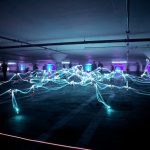What’s it like to die? The phenomenon of Near-Death Experiences (NDEs) are reported with fervour, but this isn’t matched in enthusiasm for research into the claims of people who’ve had one. Near-Death Experiences are both a quirk of human experience and an occurrence that has real potential to shed light on humans’ cognitive faculties.
The definition of a Near-Death Experience
Usually, Near-Death Experiences are discussed within a pseudo-philosophical context; a heated discussion where someone throws a pen at a whiteboard, and a televised debate with a Bishop is commissioned.
But what exactly is a Near-Death Experience? While only 4-8 percent of people (in the US) have had one, within that number, 20 per cent of cardiac arrest survivors have experienced an NDE. So it’s possible to pin down a few common features.
Examples of “near-death phenomena” vaguely include:
- The experience of being spatially detached from one’s body (the out of body, “looking down from the ceiling” experience)
- The feeling of being in a tunnel, following a bright light
- Gaining a sense of something – be it peacefulness, or even the key to the universe
What can Near-Death Experiences teach us?
While the “tunnel of light” isn’t a stairway to heaven, but caused by reduced blood flow to the retina and visual cortex (like when you experience high G-forces), the NDE phenomenon itself is an interesting way of both researching what the brain actually is and answering the most human of questions.
Accounts of different Near-Death Experiences can shed light on the cognitive processes that take place during both clinical death and biological death, which can then be used as sounding boards for how we explain everyday cognitive activity. But by far the most fascinating draw of NDEs is the teasing clue they provide to the question we all want answered: what is it like to die? Let’s look at a few approaches.
Do rats have the answers?
They might. Most of the definitive research into “explaining” NDEs is the product of animal trials. In the US, a team at the University of Michigan have tested on anaesthetised rats. The team found that brain activity continued 30 seconds after cardiac arrest, and some of that activity actually became more prominent. It also shows that consciousness might be present across nature.
In the rats’ brains, after they had clinically died, there appeared to be heightened alertness – this was activity that performed more prominently than ever before, as if on ‘overdrive’. The brains produced one last spurt of activity, the power of which was unparalleled to anything produced when the rats weren’t dead. This was a surprising find, and this heightened alertness in the brain might explain humans’ own cognitive activity after clinical death.
Or does a man named Ken Wilber have the answers?
Famous for nearly dying, an event that lasted 4 days after he deteriorated into a coma, Ken Wilber explained that his near death experience provided him with a glimpse at the eternal self. While he wasn’t aware of his experience as “Ken”, he was aware of his own death at the level of a larger entity.
What’s so enthralling about Ken’s story is that his NDE then kickstarted his career as a philosopher, speaker and joiner of all universal dots to create a unified theory of what on earth it means to be. He’s called it Integral Theory, spawning a whole movement.
Ken’s NDE has informed his books, A Brief History of Everything and its follow up, A Theory of Everything, where he sets out an esoteric philosophy of experience and, therefore, the world, largely indebted to Zen Buddhism. As it was for Ken, other people’s Near-Death Experiences might show us how to think about our life at large, and write 30 books in just under a decade.
What if you’re neither a rat nor Ken Wilber?
What if 30 seconds of mental activity after clinical death doesn’t sound like enough time to both encounter death and witness the overarching, elemental-Ego at the bottom of the empty void we call the world?
Some people don’t ever see a ghost, and others can’t help seeing them; research suggests that hearing voices is widespread among the sane. While NDEs occur within intense medical environments (rather than, say, during an encounter with the ghost of the Earl of Oxford on a Murder Mystery tour), it might be that we simply put down the phenomenon as part of a larger (and endlessly fascinating) quirk of individual human experience.
Find out more
You can take out a subscription to the Journal of Near-Death Studies, for a start.
Or you might you want get a copy of Raymond Moody’s Life after Life, the 1975 book that’s seen as making ground in the world of NDEs, made up of 150 interviews with people who have had a Near-Death Experience. However it hasn’t aged well, apparently, and some Moody’s methods are regarded as a little on the pseudo-science side.
Unfortunately, not even the afterlife has remained untouched by Hollywood’s airbrush. Many films take Near-Death Experiences for narrative fodder, and if you’d really like to watch something light on facts but heavy on ecstatic, life-changing experiences, look no further than Clint Eastwood’s Hereafter. Oh, and who can forget Flatliners?
If you’d like to know more about potential afterlives, read our article on Planning for an AI afterlife. Or you might be interest in the journey taken by the brains of dead thinkers , here.





